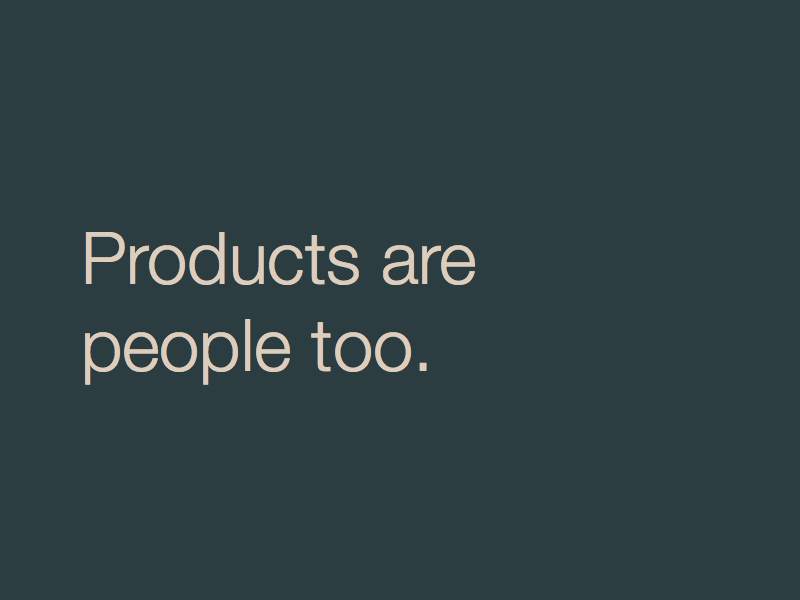From Pixels to Plastic
Gen C understand that just as they shape the world, the world shapes them.
Products are actors in the world too, nonhumans with their own patterns of behaviour, their own desires, and they own ways of socialising.
[Exercise for the reader: Can you design a shy product, or a gregarious one?]
And because Gen C is design literate, they’re aware of the relationship they have with their products and whether it’s good or bad. Just as we value the handshake of a person we’ve just met, we value the moment we meet a product for the first time, the special moment we take it out of a box.
Jane talked about happiness. Raph talked about engagement. I really don’t care—I just know they’re saying the same thing: Experience counts. Experience is our design surface now.
We understand that products sit in our social worlds, visible to our friends, saying things about us to them.
Given this, we need a different kind of design.
We understand what graphic design is, and how to do interface design. What I’m talking about here is designing for experience.
Let’s take an experiential approach to products, understanding that we live alongside our products, and spot where we cross paths and how we interact, and design those moments specially.
So, for experience design, what is our palette? What are the paints and tools we can use to make products more appropriate, enjoyable… well, better friends?
One paint is the thing I was just talking about: Observation. Observation, and the joy we take in watching a known, or almost known, process happen.
